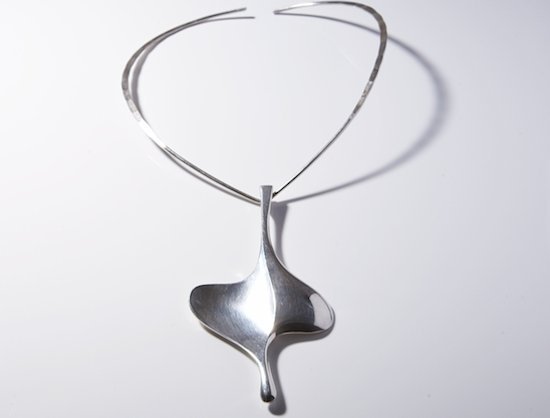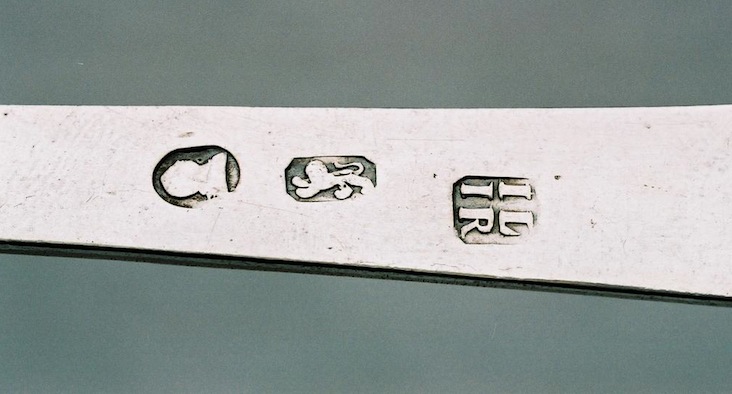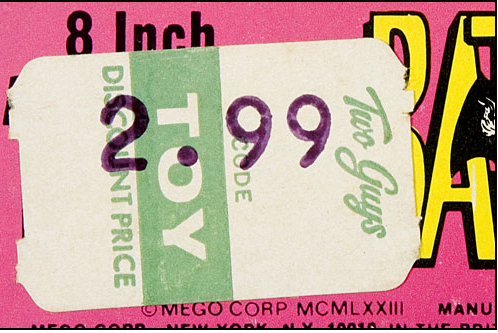There are a number of methods for removing tarnish from sterling silver. Remember do not do any harm.
A valuable antique can be reduced to a worthless piece of slag. Countless people over the centuries have destroyed works of art by rough polishing. In fact, the word polishing should be equated with sandpapering as something to be avoided.
Tarnish is not a foreign substance above the surface of the silver. Rather, tarnish is sulphur which has become chemically bound into the surface of the silver. Scouring away the silver on the surface in order to remove the tarnish is extreme overkill. The only way to remove the sulphur without removing the silver surface is to gently reverse the chemistry.
There are two qualities which need to be revived: 1) the original mirror surface formed by the silversmith during the final stages of production, and 2) the microscopic scratches which have naturally accumulated over that mirror surface in the course of lovingly using the piece. Abrasion during cleaning will obliterate one or both of these qualities, and thereby most of the value of the piece.
Hand Polishing
This is the method of care adhered to by serious collectors, as it brings out the beautiful lustre of the sterling without destroying its patina. There are a variety of products available for hand polishing, from pastes to creams. It is generally best to stay with well-known silver-care product manufacturers, as some inferior products may cause scratching. When in doubt, test the product in an inconspicuous area or on a less valuable piece. Creams and pastes are readily available through supermarkets, jewellery stores and silver dealers, as well as on the Internet.
Foam is the best and keep running your fingertips back and forth until, usually after just a few seconds, you begin to see the spots of tarnish fade. In cases of more stubborn tarnish, you may need to rinse with tap water and again fingerpaint with the foam a second or third time. Don’t be impatient and reach for something scratchier to hurry up the process: that’s the slippery slope towards destroying a piece.
Some pieces should not be immersed in water. Items containing mirrors, wooden parts, fabric, glue, etc. should be fingerpainted with as little foam as possible, then wiped with a barely damp sponge or cloth. For particularly small areas of silver near parts that must not become wet, a Q-Tip dabbed into the foam will usually do quite well.
Not all yellowness on a piece of silver comes from tarnish. Gold wash or vermeil was often applied to the interior of cups and goblets and on the service end of utensils to protect against corrosive beverages and foods. This wash is usually thin, and can be easily removed with too-abrasive or too-vigorous cleaning. Cleaning foam will not injure gold wash, but aggressive burnishing with a cloth can injure it.
It’s not necessary or even desirable to remove every bit of tarnish from a piece of silver. Especially when the piece has fluted or embossed surfaces, it’s expected that the deep grooves will acquire a darker hue than the raised areas. The resulting contrast is something to be left intact. Should a particularly stubborn spot of tarnish refuse to fade after, say, half a dozen foam fingerpaintings, it’s time to leave well enough alone.
Crucially, avoid damaging any identifying mark which may be present on the piece. American pieces will, if 92.5% silver, have the word STERLING stamped on them, usually on the underside. Older American pieces, at 90% silver (called coin silver), may have nothing more than the maker’s mark stamped on them. European pieces, of various percentages silver, will typically have anywhere from one to half a dozen cryptic symbols (lions, anchors, crowns, moons, faces in profile, single or double letters, etc.) hammered into them. It is imperative that these symbols not be worn away as they are the hallmarks by which a piece’s age, origin place and maker are indicated. Lose the hallmarks and what had been a verifiable 1754 French handworked masterpiece is now an unidentified could-have-been-mass-produced-last-week piece of junk.
If the piece is to be used soon after applying the foam, finishing up the wash with gentle dishwashing liquid and lots of cool water is perfectly reasonable. It is also perfectly reasonable to eat from the piece immediately after rinsing just with water. If, however, you are going to put the piece away, let the foam be the last thing you rinse from the piece. A trace of the foam will remain even after you’ve run enough fresh water over it not to be able to see any more foam. This trace amount of foam will slow down the piece’s chemical desire to become tarnished again.
Don’t put a piece away wet. Gently towel it dry by blotting rather than rubbing and let it air for perhaps an hour before storing it away.
Silver has value and it can either be protected or destroyed by cleaning.




















